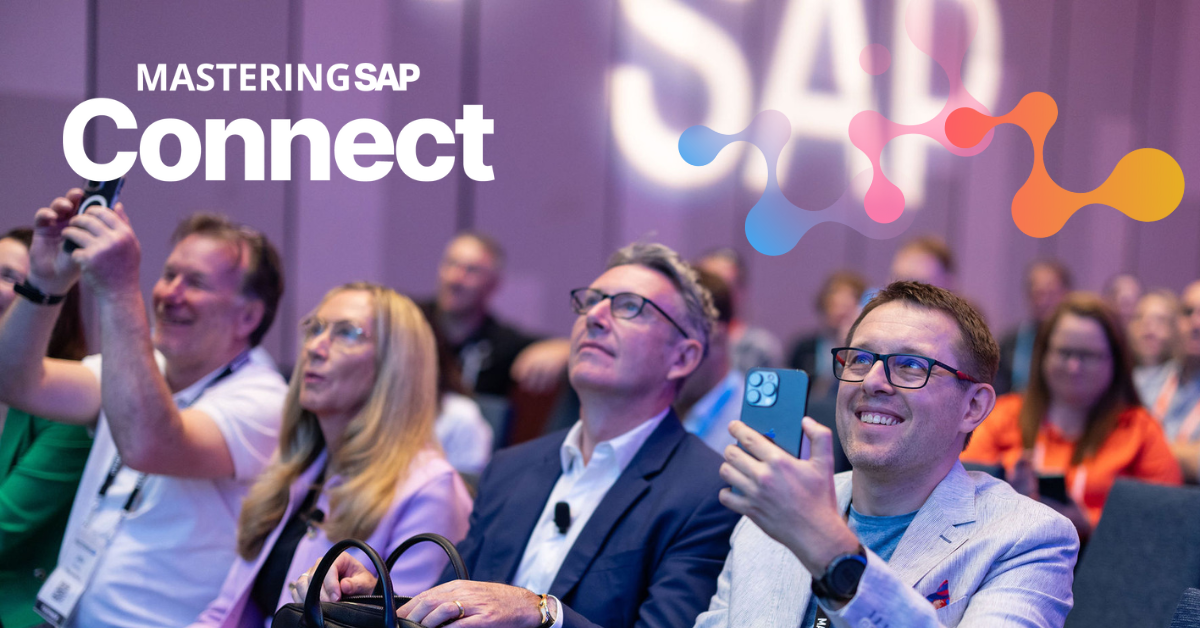SAP Platform Architecture
Filter By
Browse By
- SAP Analytics and AI
- SAP Application Development and Integration
- All SAP Application Development and Integration
- SAP ABAP
- SAP ABAP Development Tools
- SAP ABAP Test Cockpit
- SAP API Management
- SAP BAPI
- SAP Basis
- SAP BRF
- SAP Business Application Studio
- SAP CMS
- SAP Design Studio
- SAP Development Tools
- SAP DevOps
- SAP EAI
- SAP EDI
- SAP Extension Suite
- SAP Fiori
- SAP Fiori Elements
- SAP Integration Suite
- SAP Low Code Application Development
- SAP Low Code Automation
- SAP Netweaver
- SAP Release Management
- SAP UI5
- SAP Web Application Server
- SAP Web IDE
- SAP Business Process Management
- SAP Center of Excellence
- SAP CIO
- SAP Customer Experience
- SAP Data and Data Management
- All SAP Data and Data Management
- SAP BW
- SAP BW/4HANA
- SAP Crystal Reporting
- SAP Data Archiving
- SAP Data Center
- SAP Data Governance
- SAP Data Integration
- SAP Data Migration
- SAP Data Quality
- SAP Data Services
- SAP Data Strategy
- SAP Data Visualization
- SAP Data Warehouse Cloud
- SAP DMS
- SAP Document Control
- SAP EIM
- SAP ETL
- SAP ETL Tools
- SAP HANA
- SAP HANA Administration
- SAP HANA Deployment Infrastructure
- SAP HANA Studio
- SAP Master Data
- SAP Master Data Governance
- SAP MDM
- SAP Enterprise Architect
- SAP Enterprise Asset Management
- SAP ERP
- SAP Finance
- All SAP Finance
- SAP Accounting
- SAP AR AP
- SAP Asset Accounting
- SAP Billing Systems
- SAP BPC
- SAP BRIM
- SAP Cash Management
- SAP Central Finance
- SAP Controlling
- SAP COPA
- SAP Cost Center Accounting
- SAP e-invoicing
- SAP FICO
- SAP Finance Automation
- SAP Financial Closing Cockpit
- SAP Financial Consolidation
- SAP Financial Planning
- SAP FX Risk
- SAP General Ledger
- SAP Global Tax Management
- SAP Hyperion
- SAP Order to Cash
- SAP Payment Processing
- SAP Profitability Analysis
- SAP Rebate Management
- SAP S/4HANA Finance
- SAP Universal Journal
- SAP Governance Risk and Compliance
- SAP Human Capital Management
- SAP Intelligent Technologies
- SAP Platform and Technology
- All SAP Platform and Technology
- SAP Business Technology Platform
- SAP Cloud Connector
- SAP Cloud Integration Platform
- SAP Cloud Migration
- SAP Cloud Platform
- SAP Cloud Providers
- SAP Cloud Strategy
- SAP Container Platform
- SAP Digital Asset Management
- SAP Digital Integration Hub
- SAP Digital Signature
- SAP HANA Enterprise Cloud
- SAP HEC
- SAP Hyperscalers
- SAP Infrastructure
- SAP Messaging
- SAP Smart Forms
- SAP Quality and Testing
- SAP Security
- SAP Spend Management
- SAP Supply Chain Management
- All SAP Supply Chain Management
- SAP APO
- SAP Asset Management
- SAP Business Network
- SAP Digital Manufacturing Cloud
- SAP Digital Twin
- SAP EWM
- SAP IBP
- SAP Inventory Management
- SAP Label Printing
- SAP Logistics
- SAP Manufacturing
- SAP Manufacturing Automation
- SAP MES
- SAP MII
- SAP MM
- SAP MRO
- SAP MRP
- SAP Order Management
- SAP Plant Maintenance
- SAP PLM
- SAP Production Planning
- SAP S&OP
- SAP SD
- SAP SPM
- SAP Supply Chain Planning
- SAP Track and Trace
- SAP Transportation Management
- SAP System Administration
What is SAP Platform Architecture?
There are two components to any SAP Platform Architecture. The first is the platform, which is a set of solutions and components that provide the functionality that a business needs. The second is the platform architecture, which brings together the business architecture with the technology landscape in a comprehensive design. An example of a platform architecture includes business processes, or a business value chain, that is supported by different parts of the business, which rely on technology platforms or components that provide the functionality needed for those processes. Note that this is different than a data architecture which focuses exclusively on data.
What is SAP Platform Architecture?
There are two components to any SAP Platform Architecture. The first is the platform, which is a set of solutions and components that provide the functionality that a business needs. The second is the platform architecture, which brings together the business architecture with the technology landscape in a comprehensive design. An example of a platform architecture includes business processes, or a business value chain, that is supported by different parts of the business, which rely on technology platforms or components that provide the functionality needed for those processes. Note that this is different than a data architecture which focuses exclusively on data.
The advantage of taking a platform architecture approach is that clearly defines the key services that can then be used for integration with other parts of the business. It also allows business teams to take ownership of the applications and systems that they use and directly manage their technology investments. An SAP Platform Architecture allows organizations, and the various business teams within those organizations, the ability to evolve and adapt existing services while providing new services. Implementing an SAP Platform Architecture involves aligning architecture, technology, integration, and business skills.
SAP Platform Architecture Key Capabilities:
- Integrated design architecture. Without a platform architecture you can end up with a series of data and solution silos, with each part of the business running their own solutions in a way that does not interact. SAP Platform Architecture provides an overarching design at the platform, data, and process levels.
- Global design. Many organizations perform data modeling, or perhaps at a broader level have a data architecture which needs to be global. But SAP Platform Architecture must provide a global interaction between multiple, distributed data structures, data sets, databases, data platforms, and the business systems that utilize them.
- Flexibility through modular design. The layers of an SAP Platform Architecture provide modularization into the platform, where the components and design remain stable, and a complementary set of services and processes that can be updated to support new and changing business needs and requirements.
SAP solutions such as SAP Business Technology Platform, SAP S/4HANA, and SAP HANA Enterprise Cloud all offer reference architectures for their system, but these must be integrated into a broader SAP Platform Architecture that includes not only the technical architecture but also the way that processes interact with data and the business value chain.
856 results
-

ABAP Development in the Cloud
Published: 01/November/2018
Reading time: 29 mins
Thank you for registering to read the discussion transcript on taking advantage of the newest ABAP innovations, enterprise-grade SAP Cloud Platform business and application services, and the power of the SAP HANA business data platform to build breakthrough business applications in the cloud. Please find the transcript below. Matthew Shea: Hello, and welcome to our…
-

Take Your Mobile SAP Systems Further with Sybase Unwired Platform
Published: 11/October/2010
Reading time: 26 mins
Discover Sybase Unwired Platform, a mobile enterprise application platform (MEAP), and how you can use it to mobilize your systems. SAP provides this platform with the co-innovation architecture of SAP NetWeaver Mobile 7.1. This is the first time that SAP has supported the mobilization of all major mobile device types with a single technology. Key...…
-

How to Select the Right Mobile Solution Architecture for Your Use Case
Published: 12/October/2012
Reading time: 24 mins
Understand the main mobility architecture paradigms currently supported by the Sybase Unwired Platform, and the advantages and drawbacks of each. Get a high-level view of the architecture and basic steps for implementing each. Key Concept A mobile business object is a method of encapsulating business data so that it can be used across multiple kinds...…
-
-

Technical Guide: Transitioning to SAP Cloud Platform Integration Suite
Published: 22/May/2020
Reading time: 15 mins
Seamless integration across applications and systems — whether they are SAP, non-SAP, on-premise, cloud, or hyperscaler systems — enable organizations to digitalize their end-to-end processes and make the enterprise more connected and intelligent. Forward-thinking organizations are taking a holistic and strategic approach to their enterprise integration initiatives as they pursue digital transformation, embracing the agility…
-

Q&A on SAP BI 4.2: What’s Happening with SAP’s BI Products, and What Does It Mean for You?
Published: 01/May/2016
Reading time: 77 mins
During this live Q&A session, Jayne, Ty Miller, Olivier Duvelleroy, and several other key product leaders from the BI product groups at SAP, including SAP BusinessObjects Web Intelligence, SAP Lumira, SAP Design Studio, SAP Analysis for Office, and SAP BusinessObjects Crystal Reports, gathered to answer readers’ questions on the road ahead for SAP’s BI products,…
-

SAP’s Integration Solution Advisory Methodology (ISA-M) for the Intelligent Enterprise
Published: 21/November/2019
Reading time: 17 mins
by Matthias Allgaier, SAP SE A solid integration strategy is crucial for providing the flexibility and agility organizations require to meet rapidly changing business needs. When building this strategy, enterprise architects must take into account a variety of pervasive integration requirements. For example, leveraging intelligent technologies to advance business outcomes — becoming an Intelligent Enterprise,…
-

Lessons Learned from an SAP HANA Cloud Platform Implementation
Published: 06/December/2016
Reading time: 19 mins
Key principles and facts are included in this overview of the design and implementation of a cloud application on SAP HANA Cloud Platform. Key Concept Applications consume and expose web service application program interfaces (APIs) that facilitate the re-usability of the capabilities of an application and support the integration into other applications. The following solution...…
-
-

How to Design the Architecture and Develop an IoT Application on SAP HANA Cloud Platform
Published: 01/August/2016
Reading time: 9 mins
Learn how to develop an Internet of Things (IoT) application that fetches data from a sensor and saves it on an SAP HANA database on SAP HANA Cloud Platform. Key Concept SAP HANA Cloud Platform is a platform for extending, integrating, and building new applications. It provides design templates and prebuilt applications that have responsive...…
-

SAP BusinessObjects Planning and Consolidation: Get to Know It Before Migrating
Published: 14/April/2009
Reading time: 14 mins
Learn about the architecture of SAP BusinessObjects Planning and Consolidation. This helps you understand the migration options available for the different SAP BusinessObjects Planning and Consolidation releases. Key Concept Performance management is about the methodologies, processes, and systems that companies use to drive and monitor organizational performance. Organizations have to decide the right strategies to...…
-

Optimizing BI Administration in SAP Environments: Q&A on How to Properly Maintain and Secure Complex, Shared Landscapes
Published: 01/May/2016
Reading time: 42 mins
Business intelligence (BI) is the lifeblood of data-driven organizations, enabling you to turn the data in your SAP systems into actionable information that drives better decision making, uncovers opportunity, and improves efficiency. The modern BI landscape is an increasingly complex one, however, with trends such as big data, the cloud, and the Internet of Things…
Featured Experts
-

Akash Kumar
Associate General Manager, HCL
-

Suraj Gauli
PWC
Become a Member
Unlimited access to thousands of resources for SAP-specific expertise that can only be found here.
Upcoming Events
Related Vendors
Your request has been successfully sent

